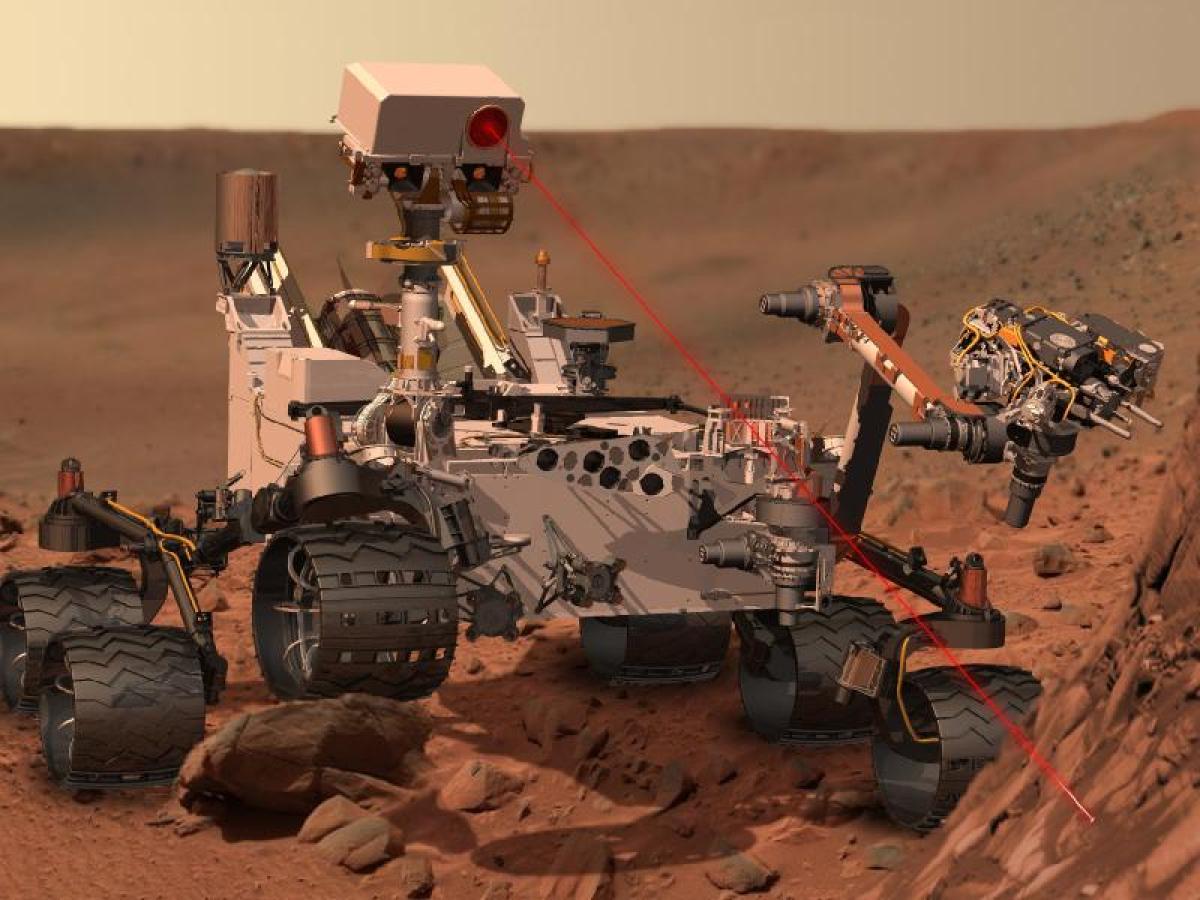
If NASA's newest Mars rover doesn't touch down safely Sunday night (Aug. 5), the future of Red Planet exploration could be thrown into serious doubt.
The 1-ton Curiosity rover's main goal is to determine if Mars can, or ever could, support microbial life. But the huge robot is also carrying the hopes and dreams of NASA's venerable Mars program on its back to some extent, so a crash Sunday night could be devastating.
"It could take the entire Mars program down with it," Robert Zubrin, president of the Mars Society, which pushes for human settlement of the Red Planet, told SPACE.com's Leonard David. "It is victory or death."
Big funding cuts
President Barack Obama's 2013 federal budget request, which was released in February, slashes NASA's planetary science program funding from $1.5 billion to $1.2 billion, with further cuts expected in the coming years.
Much of the money will come out of NASA's robotic Mars exploration program, which has enjoyed a string of successes in the past decade. After landing in January 2004, for example, the twin rovers Spirit and Opportunity discovered plenty of evidence that Mars was once warmer and wetter than it is today. And the Phoenix lander found subsurface water ice near the planet's north pole in 2008.
Nevertheless, the White House budget proposal cuts NASA's Mars funding from $587 million this year to $360 million in 2013, and then to just $189 million in 2015. [NASA's 2013 Budget: What Will It Buy?]
As a result, NASA was forced to drop of out the European-led ExoMars mission, which aims to deliver an orbiter and a rover to the Red Planet in 2016 and 2018, respectively. And the agency is fundamentally restructuring and downscaling its Marsprogram, in an attempt to figure out how to make the most out of every precious dollar.
But NASA planetary science officials still hold out hope for a funding comeback, with the help of Curiosity. They think the rover's discoveries could loosen politicians' pursestrings and reinvigorate the agency's robotic exploration efforts.
"What a tremendous opportunity it is for us," Jim Green, head of NASA's planetary science division, said at a conference in March. "I believe [Curiosity] will open up that new era of discovery that will compel this nation to invest more in planetary science."
Sticking the landing
So a successful landing on Sunday night is of paramount importance to the space agency, officials have said.
Curiosity's touchdown "could arguably be the most important event — most significant event — in the history of planetary exploration," Doug McCuistion, director of NASA's Mars Exploration Program, said last month.
But success is not a given. Landing a robot on another planet is never an easy task, and Curiosity's touchdown will perhaps involve more hand-wringing than usual.
Because it's so heavy, engineers had to devise an entirely new landing method for the rover. A rocket-powered sky crane will lower Curiosity to the Martian surface on cables, then fly off to intentionally crash-land a short distance away. Such a maneuver has never before been tried on another world.
If success over the course of the mission could bring great dividends to NASA's Mars program, then failure Sunday night could have a chilling effect. [How Curiosity's Nail-Biting Landing Works (Pictures)]
"I think if we are fatal on landing, that will have a very negative influence," said Caltech's John Grotzinger, lead scientist for Curiosity's $2.5 billion mission, which is officially called the Mars Science Laboratory (MSL).
"It's going to force people to look back and ask if it's possible to achieve these very complex, more demanding missions from a technological perspective," Grotzinger told SPACE.com. "How can you talk about sample-return if you can't do MSL first?"
Keeping the program vital
NASA has one more Mars mission firmly on the books beyond MSL, an atmosphere-studying orbiter called Maven that's due to launch next year. The agency plans to launch another mission in 2018 or 2020, partly to keep the program vital.
But a Curiosity crash could persuade some talented scientists and engineers that there's not much of a future at Mars, at least not for a while, researchers say.
"If this thing were to fail, I think a lot of people would trickle away and do other things," said Ken Edgett, of Malin Space Science Systems in San Diego. Edgett is principal investigator for Curiosity's Mars Hand Lens Imager instrument, or MAHLI.
He added that a crash might spark discussions within NASA about shifting resources from Mars to other promising destinations, such as Jupiter's moon Europa, which harbors a liquid-water ocean beneath its icy shell.
"I don't like that either-or scenario, but I think that's where we're headed," Edgett told SPACE.com in April.
Mars keeps calling us
Edgett stressed, however, that he didn't think a landing mishap would be the end of the Mars program. Other experts echo that viewpoint, saying that Mars will continue to hold our interest and draw our scientific explorers back.
"It's one of the most scientifically compelling objects in the solar system — perhaps in terms of ease to get to, the most compelling," said Scott Hubbard of Stanford University. "And it's the place, ultimately, for human exploration. So I think Mars exploration will continue."
Hubbard speaks from experience. He's the former "Mars Czar" who restructured NASA's Red Planet program after the agency's Mars Polar Lander and Mars Climate Orbiter both failed in 1999.
Still, success would definitely be preferable for those who care about Red Planet exploration. A strong showing by Curiosity could lead to bigger things down the road at Mars, Hubbard said.
"There's a window, I feel, with a successful mission — particularly if it finds evidence of organics — to give the scientific community even more stimulus and ammunition to ask for a re-look at the budget," Hubbard said.
No comments:
Post a Comment